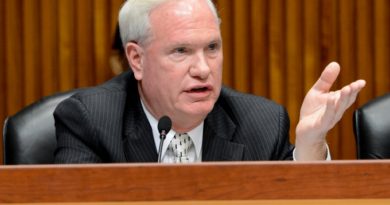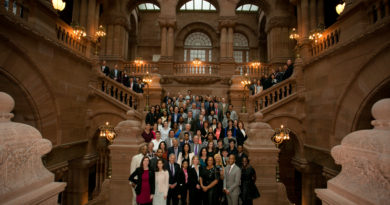More Rail Transit = Stronger Economy
By Elizabeth Crowley
Queens is growing fast – really fast. The World’s Borough has seen large growth in population and employment. Every month, more and more people and jobs are coming here. But to accommodate this growth and alleviate the burdens of residents and businesses, our transportation options must improve, and they must improve quickly.
Public transportation within Queens right now is literally operating beyond its capacity. New and emerging businesses in New York City know the value of good transit, and they know the headaches that come with transportation deserts.
Transportation deserts are defined as areas that lack adequate public transit service, given areas containing populations that are deemed transit-dependent. They are determined based on population density and distance to mass transit, and about 70 percent of Queens exists inside a transportation desert.
Our mass transit lines, such as the 7 and E trains, are the most utilized lines in the city, Queens streets are overrun by cars, and our buses are painstakingly slow. Simply put, we need relief.
We believe Long Island Railroad’s (LIRR) Lower Montauk branch, which runs 8.5 miles from Jamaica through Maspeth to Long Island City, can be that source of relief. It is a rail line and public right-of-way capable of contributing to the economic growth of every community along the way.
We believe a commuter service along this track, dubbed the QNS Light Rail, could be what our borough needs for long-lasting economic growth.
Small business within the borough continues to grow each year. A SmartAsset 2016 study showed 7.8 percent business growth in Queens County, totaling over $7 billion. Further, businesses with five employees or less account for more than 65 percent of the borough’s new business growth over the last decade.
An environmentally sound commuter rail would increase exposure for business owners and allow existing businesses to grow and expand their consumer bases.
Long Island City and Jamaica are already on the rise. But Maspeth, a large business hub in the middle of this line, is particularly ripe for economic growth. It is currently zoned M-3, which allows for the development of biotech industries.
Biotech is a rapidly growing field and has received nearly $6 billion in venture-capital funding in 2015; up 62 percent from 2014. We want to ensure as this industry continues to grow, Queens can both accommodate and benefit from it.
To grow this industry and others in Queens, we need reliable, convenient public transportation. Across the country, newly developed and vibrant communities have benefited from affordable, sustainable transportation.
Kendall Square in Cambridge, Massachusetts, was a large industrial complex that declined around 30 years ago. After it was renovated and rezoned to allow biotech, it now has more biotech business in just that one area than in all of New York and California.
Right across the East River in Hudson County, New Jersey, the light rail line has contributed to the revitalization of cities like Jersey City, Weehawken and Hoboken.
Financial institutions such as Bank of America, as well as law firms, education providers, retailers, and more have planted roots in Jersey City since the light rail came to being, and its economy has benefited from this business growth.
The QNS Light Rail line would run through the fastest growing residential, industrial and transit hubs in all of Queens. It would give more options for New Yorkers in need of more transit. It would enhance existing businesses and expand opportunities to others. It is in the best interest of our communities, our borough and our city to put this proposal on the fast track.
Elizabeth Crowley represents the 30th Council District, which includes Glendale, Maspeth, Middle Village, Woodhaven and Woodside.




